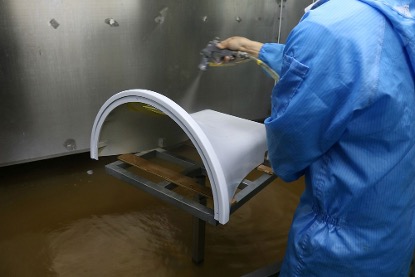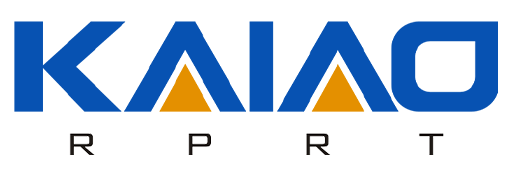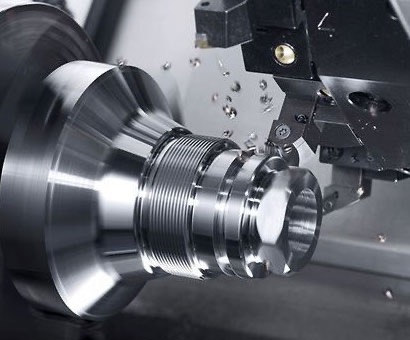Machined finish refers to the surface texture or quality achieved on a part after it has undergone machining processes, typically using Computer Numerical Control (CNC) technology. The finish is influenced by the machine’s capabilities, the tool’s type and condition, the cutting parameters, and the type of material being machined. A machined finish can range from rough to highly polished, depending on the specifications and end-use of the part.
The machined finish on CNC parts is crucial. However, do you know when is CNC parts appropriate to add on machined finish? In today’s article, we are going to address this issue. Let’s dive in!
Significance of Machined Finish in CNC Manufacturing Process
The machined finish is not merely cosmetic but stands for reliability and lifecycle. The significance of these finishes can be seen across several critical dimensions in manufacturing:
-
Enhanced Mechanical Properties
A well-applied machined finish can improve the mechanical properties of a part. For example, smoother finishes often result in lower friction surfaces, which can reduce wear and tear when components interact. Certain finishes can strengthen the surface, making parts more resistant to fatigue and cracking under cyclic stresses.
-
Improved Fit and Assembly
Every manufacturer cares to present precision to its clients, especially when parts must fit together with tight tolerances. A precise machined finish ensures that components fit together as intended, reducing the need for additional machining and adjustments during assembly. This precision is crucial in industries like aerospace and automotive, where improper fit can lead to operational failures.
-
Corrosion Resistance
Machined finishes can enhance the resistance of CNC parts to corrosion, particularly in harsh environments. For instance, smoother surfaces provide fewer microscopic crevices where moisture and corrosive agents can accumulate, thereby extending the part’s lifespan. This is particularly important in marine, chemical, and outdoor applications.
-
Aesthetics
CNC machining parts is a kind of industrial design work, so it should not be overlooked the aesthetics of its own, especially in consumer-facing products. A high-quality finish can improve the appearance of a part, which is crucial for consumer electronics, automotive exteriors, and other applications where consumer perception influences the value of the product.
- Standard Compliance and Quality Control
In many industries, adhering to specific machined finish standards is not optional but a regulatory requirement. These standards ensure that parts are manufactured consistently and can perform dependably in their intended applications. Adhering to these standards also simplifies quality control processes, as the criteria for inspection and acceptance are clearly defined.
Overview of Scenarios When CNC Parts Need Machined Finish
In CNC manufacturing, the application of the right machined finish is essential not only for the visual appeal of a part but also for its function and longevity. Certain scenarios particularly underscore the need for specific types of finishes:
Initial Testing and Validation
Machined finishes are crucial during initial testing and ventilation processes to ensure accurate measurements and proper fitment of the parts. A machined finish provides a smooth and precise surface, allowing for accurate testing and reliable results. Plus, it helps in creating a proper seal or connection between components, ensuring efficient ventilation and preventing any leaks or air gaps.
Structural Parts (such as Load-Bearing)
Machined finishes are essential for structural parts, especially those that bear loads or support the overall structure. A machined finish provides a precise surface that allows for proper alignment and assembly of load-bearing components. In automotive or aerospace manufacturing, for instance, load-bearing parts with the correct finish can better distribute stress and withstand operational pressures without failure. This is crucial for safety and durability, as even minor imperfections can lead to significant failures under stress.

Adhesive Bonding
For components that will be joined together by adhesives, the surface finishing can dramatically affect the strength of the bond. A finish that is too smooth might not allow sufficient adhesive interaction, whereas a surface that’s too rough could lead to uneven bonding and weakened integrity. Precisely controlled machined finishes ensure that the surfaces are ideal for adhesives to adhere properly, forming strong, durable bonds essential in industries like construction and electronics manufacturing.
Before Powder Coating
Powder coating is a typical finishing technique that is used to enhance the aesthetic and protective qualities of metal parts. Before applying powder coating, it is essential that the part’s surface is machined to specific standards to ensure the coating adheres evenly and cures correctly. The right machined finish will eliminate imperfections that could result in bubbling, flaking, or uneven coating, thus ensuring a high-quality finish that is both visually appealing and resistant to environmental factors such as moisture and UV light.
Specifications to Examine the Quality of Machined Finish
The quality of machined finishes is critically assessed using several standardized surface roughness parameters. It is common to apply these several standard parameters for examining. These parameters provide insights into the surface roughness and overall quality of the machined surface.
Here’re what:
-
Ra (Arithmetic Average Roughness)
Ra is the most commonly used parameter for surface roughness. It means the arithmetic average of the absolute values of the profile heights over a given length. Ra provides a general indication of the surface texture and is often specified as a criterion in engineering drawings. It is particularly important for general functionality and aesthetics, as it gives a broad indication of the overall smoothness of the surface.
-
Rz (Average Maximum Height)
Rz is also a parameter to define the average of the vertical distance from the highest peak to the lowest valley within five consecutive sampling lengths along the surface. It provides a measure of the surface texture’s vertical extremes over a specified length. Rz is particularly useful in machined finishes where the peak-to-valley height affects performance, such as sealing surfaces where tight closures are necessary.
-
Rmax (Maximum Roughness Depth)
Rmax represents the largest single roughness depth within a given sampling length. In a single sampling length, this figure is the maximum to describe the vertical distance from the highest peak to the lowest valley. This measurement is critical in scenarios where extreme deviations could lead to failures, such as in load-bearing applications where surface irregularities might initiate cracks or other structural failures.
-
Rp (Maximum Profile Peak Height)
Rp measures the height of the highest peak above the mean line within a sampling length. This parameter is important for applications where the peaks of a surface texture can impact performance, such as in surfaces that must mate or seal with a high degree of precision. High peaks might prevent proper mating, leading to leaks or mechanical failure in seals.

Introduction of KAIAO’s Premier Machined Finish Services
At KAIAO, we understand the critical importance of surface finishes in the performance, aesthetics, and durability of CNC machined parts. Our comprehensive range of machined finishing services is designed to meet every aspect of your engineering requirements. It ensures that the final product not only aligns perfectly with your design specifications but also exceeds industry standards in quality and reliability.
What Can We Bring to Our Clients?
KAIAO can offer an extensive array of surface finishing services tailored to enhance the functionality and appearance of your parts:
- Basic Finishes: Including deburring, polishing, and smoothing to remove sharp edges and improve handling safety.
- Advanced Coatings and Treatments: Such as painting, silk printing, anodizing, and sandblasting, which provide both protective and aesthetic benefits.
- Specialized Treatments: Including heat treatment, black oxide, nitride coating, carburizing, PVD coating, and powder coating, each selected to improve the part’s wear resistance, corrosion resistance, or aesthetic appeal.
- Post-Processing Care: Comprehensive handling of parts with clean sweeping, deburring, rust-cleaning, and degreasing to ensure that every component delivered is ready for immediate use.
These finishing options enable us to deliver parts in visually striking and functionally superior, ready to be integrated into more complex assemblies or used as standalone products.
Why Trust KAIAO for Your Machined Finish Needs
Whether you’re developing prototypes or ready for full-scale production, our machined finish services are here to enhance your project’s success. Here are our advantages:
Precision and Quality
Precision is at the heart of everything we do. KAIAO’s finishing services adhere to stringent tolerances down to ±0.0003 inches (0.010 mm), ensuring that every part meets your exact specifications.
Fast Finishing Turnaround
Understanding the fast pace of modern industries, we offer flexible lead times with the ability to deliver as fast as 1 day for 1-500+ units per CAD. This rapid turnaround helps you meet project deadlines and reduces time-to-market for your products.
Certified Excellence
KAIAO is committed to upholding the rigorous regulations and standards on machined finish, as evidenced by our certifications, including ISO 2768 Medium, ISO 9001, AS 9100, and ISO 13485. These certifications reflect our dedication to quality management and precision manufacturing across various sectors, including aerospace, automotive, and medical devices.
Instant Quoting
To streamline your planning and procurement processes, KAIAO provides instant quotes, allowing you to make informed decisions quickly and efficiently.

Conclusion
With over 25+ years of experience in manufacturing CNC machine parts, we, KAIAO, have become one of the leaders in the CNC manufacturing industry. We have a robust team of over 100 technical sales representatives, project managers, and production specialists. For now, we are operating out of a 3000 m2 facility equipped with advanced manufacturing technology, catering to various clients’ demands. If you are interested, please visit our official website to get more information and contact us directly!

